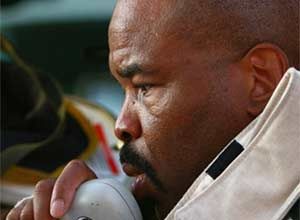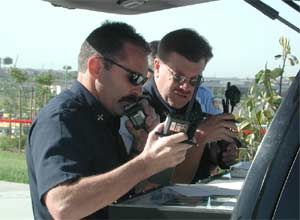
By Janet Kornblum
We've all experienced the need to replace technology like a laptop. Solution: go shop and find the best one you can get for your money.
But it's 2009 and you decide you want your PC to be your phone as well. After all, you know about Skype and you want to save some money by using the Internet as your phone provider.
So now you have to make sure your new PC can support IP (Internet Protocol) phone calling. Then you think about all the other ways you use your PC: You already have a printer, an external hard drive and of course a home network. So you have to make sure your new machine is compatible with those as well: After all, you don’t want to have to buy new devices.
Then you remember you volunteered to do some computer work for your daughter's class, so your computer has to be able to plug into her school system. And you want to make sure you can still use your brother-in-law's digital video recorder.
And to make matters more stressful, you know you won’t be able to afford another PC for a very long time.
Now, imagine it isn't just a computer for which you're shopping.
Instead, your job is to buy new technology for your city. Included in the affected group will be your law enforcement agency, your fire department, EMS unit, and a handful of other city services. And it looks like a new handheld radio — or perhaps an entire communication system — is in order.
Suddenly, buying a PC doesn't seem so complicated. As any city manager, public administrator, police or fire chief, or other public sector purchaser can tell you, you have much to consider before making a purchase. Just like with a PC, the days when one piece of technology could serve just one purpose in one system are long gone.
Public safety agencies now live in a post-9/11 and post-Hurricane Katrina world. Agencies must consider not just the way their technology purchases will work within their own jurisdictions, but they also need to know how they will interoperate with other jurisdictions. Will that radio enable you to talk to firefighters in the neighboring town? Will it allow you to talk to sheriff deputies in the next county over? What if several departments are called into deal with one emergency? Will they be able to communicate?
Interoperability is the buzz word these days. And those in charge of purchasing say it's a good word to learn if you want to go far, advises Major Dean Hairston with the city of Danville, Virginia, police department.
These days, Hairston says, law enforcement agencies are painfully aware that they not only have to stay on the cutting edge of technology; but they also have to be able to communicate across jurisdictions because as everyone knows, disasters don't politely stop at city, county — or any other — border.
Public safety agencies pondering how to spend government stimulus checks should consider not just the short-term investments like hiring new officers. They must consider long-term ones like purchasing new systems that will help lower costs and bring their agencies into the future, Hairston says.
"You have to have a long range plan — a blueprint," says Hairston, operations commander. "What are my short-term goals, my long-term goals? Whatever solution you choose, it has to be scalable: will it allow me to grow?"
 |
Charles Bailey, fire captain in Montgomery County, Md., currently assigned to the Communications Section as the Operations Supervisor, agrees. "Really if you are thinking about buying communications infrastructure it should be the tail end of a long process that includes strategic planning. You have to know where you are headed and where your partner organizations are headed or you will all be chasing your tails. A small local fire department I am a member of wrote a grant for mobile and portable 800 MHz radios to allow communications with our neighboring jurisdictions. My co-writer actually walked me through the technical portion of ordering the right stuff and conducting the needs assessment. It worked out well for us and those radios have provided seamless interoperability on major incidents."
Agencies can no longer afford to be parochial. Buy a radio that just works for your department, and you might find yourself looking for a job pretty quickly, Hairston says.
But that's not likely to happen: grants these days tend to favor systems that are interoperable — that allow your agency not only to operate efficiently in and of itself, but also allow it to operate regionally and even nationally, Hairston says.
Bailey adds, "Radios are not cheap and once you own them you have to maintain them — once again, not cheap.
But if a single solution can solve problems for multiple agencies or jurisdictions you can spread the costs as well as the benefits."
In Hairston’s case, there's a geographical point where five agencies converge. They all used different systems and frequencies. In the best case scenario, officers could talk to each other through dispatchers. But if they were on a car chase, for instance, forget about it. By the time the information was relayed — like in a game of telephone — even if it was accurate, it was old, he explains.
"There's a tape we have where we recorded what that actually sounds like and people couldn't believe the noise that it generated," Hairston says. "You have the voice conversations of the radios — you have different people on different radios … and then you'd have the radio traffic. It’s phenomenal. Then you have multiple lines and you have other people calling in. It's a real mess."
Anyone who has been in a similar situation can relate.
Additionally, it's important to invest in a company that has staying power, adds Hairston and others. "Will that company be around? Will the company have the assets to support you when the agency grows? You don't want to outgrow your resources."
So how does one buyer on a limited budget handle it?
"In the past an agency would have to choose between best of breed or the large established vendors," explains Jennifer Bremer, who works on Solutions Marketing, Safety & Security for Cisco Systems Inc. In the past an agency might have to choose between what might be the most ideal solution from a smaller vendor that hasn’t yet become an established competitor or something from one of the larger, established vendors. Go with the upstart product, and you may find yourself without a service and support structure if the young company goes belly-up. Go with the decades-old manufacturer and you may get something that A) won't work with other products out there; B) is reliant on outdated technologies; or C) both of the above.
This conundrum was worsened by the fact that the established player was usually more expensive and its smaller, younger competitor was typically less expensive.
Happily, the level of innovation now taking place at some of those big companies — think of companies such as IBM, Cisco, Motorola, HP, etc. — is just as aggressive as what’s happened in the technology start-up universe for the past decade and a half.
Further, the solutions now being presented by many of those "big dogs" are taking into account the notion that being completely proprietary can be a counterproductive strategy, not just for the first responder agencies they serve, but for the vendors themselves.
 |
Bremer explains, "We've been around for 30 years. We have the network everyone wants. But we've gone out and looked at all these application vendors and we've certified and integrated them. Now you don't have to choose — you can have a very established vendor that you know is going to be here 30 more years and the applications from those smaller vendors."
In some of today's newer solutions, a system can be built with different pieces, plugging into a larger, interoperable network that allows various pieces to communicate with each other and across jurisdictions. With this type of system, Hairston says, his agency is now able to communicate with other agencies as if they're all on the same system — using simple software.
Conversely, many agencies are still using a stopgap system that does the job, but will someday be supplanted by an eventual technology purchase.
"I think it's important to realize that interoperability, while a simple concept, has many layers to it," Bailey explains. "On the simplest level it means that Jurisdiction A carries an extra radio for the times when they interact with Jurisdiction B. You can also use technology like gateway devices, console patching, and other things to make this work too."
"Technology's a tool," Hairston says. "And technology when used correctly and supported correctly can take the place of a number of people. It doesn’t reduce the amount of work you have it just enables you to manage more — more efficiently."
That' never been truer than now, especially given budget cuts.
"Few departments these days have unlimited budgets" says Bailey. "It's important to not just buy stuff because it is available. The technology never stops evolving and you will be hard pressed to keep up with it. Regular reviews of your strategic plan along with regular reviews of incident communications will tell you when it is time for change and what that change should look like."
"We can' work harder," Hairston says. "We have to work smarter. We have to start looking at what's going to give me the best bang for the buck? What's going to allow my officers to go home at night? What are the things that I' going to be able to invest in that have a long term benefit? People who are farsighted will be around for a long time. Those who are shortsighted, those who only purchase for today and not tomorrow, will not be here tomorrow."
No matter how it is accomplished — whether with the latest technology or hand-written notes passed from individual first responder to an incident commander — the ability to communicate across departmental, municipal, and other public safety boundaries makes a huge difference, especially when seconds and minutes can translate into lives. The key for agencies and administrators today is to aggressively move toward the goal of making communications infrastructure purchases that not only synch up with neighboring and national systems today, but can grow as technology continues to evolve for many years into the future.
Copyright © 2024 FireGrantsHelp.com. All rights reserved.
